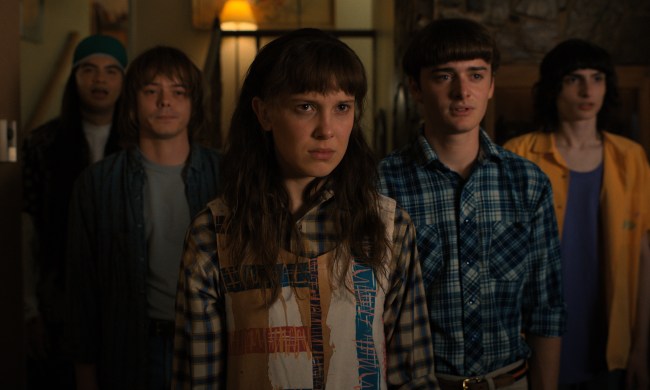I’ve got deeper problems with HBO than a single episode of Game of Thrones being too dark.
In fact, being an A/V reviewer for a major tech outlet, I — unlike many in the Twitterverse — actually had no problem enjoying last weekend’s episode of Game of Thrones without wondering what was happening on screen.
The sights and sounds associated with massive dragons, sword fights, and spit-roasted baddies came through the 4K BenQ projector and Vizio soundbar system I use for at-home testing with relative brightness and clarity, unlike so many forced to watch in well-lit rooms on older TV sets.
My problem is more chronic. I have been consistently disappointed with the quality of the content HBO delivers to my screen, regardless of what I’m watching it on. Here’s why:
No 4K, No HDR

At this very moment, I can buy a (totally decent, by the way) 4K TCL TV with built-in Roku for just $338. In fact, the ability to buy a solid 4K TV for a great price isn’t new; virtually no manufacturer even makes 1080p TVs anymore, period.
And yet, nothing that HBO streams via my $15 per-month HBO Now subscription will be in 4K. The max either of the company’s streaming services will deliver to a TV, projector, or computer screen is 1080p — one quarter the resolution any modern TV is capable of.
Then there’s the bitrate and compression algorithms being used to deliver that 1080p content to your screen. They’re bad.
As was evidenced during this week’s Game of Thrones extravaganza, dark pictures are often delivered with blocking or banding artifacts, which means that nobody streaming the latest episode of Game of Thrones — or any HBO show, for that matter — is seeing it the way that the show’s creators intended.
How do I know this? This morning I sat in our A/V testing room and watched the latest episode on a brand new, top-of-the-line LG C9 OLED, a TV with black levels and color so perfect that it might end up being our favorite of the year. Guess what? Those artifacts just showed up even clearer.
Art the way the artist intended

“I know it wasn’t too dark because I shot it,” responded Emmy-winning Game of Thrones cinematographer to questions about why the episode looked too dark on some viewers’ screens.
Taken out of context, he might sound a bit pompous, but he’s probably right.
It seems unlikely one of the world’s best cinematographers would spend 55 days freezing his ass off in Northern Ireland and not get exactly what he was going for. More likely, in using less-than-stellar compression and resolution (not to mention not offering cleaner highlights via high dynamic range, another thing HBO’s streaming services don’t support), HBO didn’t do justice to his work when delivering it to audiences around the world.
That’s a shame, because as with most art, much of the beauty in modern cinema and TV is subtle, and given that the Blu-ray release is likely far off, that means that we can’t experience the Battle of Winterfell the way it was truly meant to be experienced.
It’s also sad for HBO. In the end, HBO pays all this money to create a show that looks and sounds gorgeous, but then delivers it to our living rooms in what can only be called — at least in the contemporary streaming environment — middling quality.
The Netflix difference

If anything, Netflix has the opposite problem.
Just yesterday, the streaming giant shared news that it had improved audio quality for those of us with surround-sound and Dolby Atmos systems at the request of two of its most valued creators, the Duffer brothers.
The brothers’ ultra-hyped series Stranger Things — which was available in 4K HDR from the start — featured a car chase during the first episode of its second season. When watching the chase back on a typical living room system, something the creators’ do for all of their episodes to make sure they look and sound as good as possible for average viewers, they noticed that the sound lacked the clarity they expected.
In response to their critique, Netflix put a team of engineers on the audio quality issue, who just launched a high-quality audio algorithm across the board. The company didn’t just fix Stranger Things, it fixed everything.
This morning, I sat and watched that same car chase scene on the same LG OLED (via our Anthem receiver and Pioneer Elite speakers) right before turning to Game of Thrones. Guess what? It looked and sounded significantly better than the HBO offering. Guess what else? My Netflix subscription costs just a dollar more per month than my HBO Now subscription.
Quality and quantity

Delivering high-quality video and audio content to a massive number of users is no easy task, and there are likely significant infrastructure blockades that keep HBO from hitting the same picture and sound quality as Netflix or Amazon Prime Video (which also offers Dolby Atmos, 4K and Dolby Vision HDR).
Netflix has had significantly more time to scale its streaming infrastructure than HBO has, and Amazon … well, Amazon essentially hosts half the internet. Heck, it’s even looking at surrounding the globe with satellites for better connectivity.
It’s also worth noting that HBO isn’t the only streaming service that is behind on quality. Hulu doesn’t offer 4K picture either, for example,and it lacks surround-sound for the vast majority of titles. But then again, Hulu doesn’t have the most popular show on modern television.
AT&T just bought Time Warner (which includes HBO) for $85 billion, meaning that there’s probably some cash floating around to upgrade HBO’s streaming infrastructure. Let’s hope that happens.
In the end, I just want to watch a massive undead dragon emerge from the clouds without weird artifacts behind his head. Is that too much to ask?



